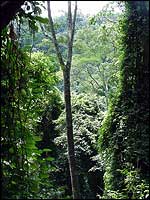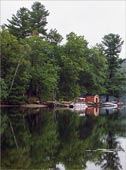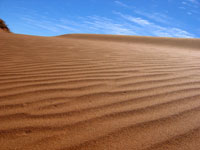Biomes
All animals have the same basic needs for food, water, oxygen and shelter. However the places where animals live can be very different. The environmental and climate conditions determine what kind of animals will live in an area.
What are Biomes?
 Where an animal lives is called its habitat. The earth is made up
of a complex network of habitats, each with a particular rainfall,
temperature, light levels and many other factors. Biologists have
divided this complex network of habitats into zones called biomes. Each
biome has a distinct community of animals, plants and climate.
Where an animal lives is called its habitat. The earth is made up
of a complex network of habitats, each with a particular rainfall,
temperature, light levels and many other factors. Biologists have
divided this complex network of habitats into zones called biomes. Each
biome has a distinct community of animals, plants and climate.
Biomes are classified into five major biomes:
- Aquatic
- Deserts
- Forests
- Grasslands
- Tundra.
These biomes are often broken down into sub-categories. Some of the sub-categories are:
Aquatic - Oceans
Oceans are the largest biome covering nearly 75 percent of the Earth’s surface.
They are home to some of the largest and smallest animals such as whales, sharks, fish, octopuses, plankton and lots of bacteria.
Aquatic - Freshwater Rivers & Wetlands
 Only three
percent of the earth’s water is fresh and includes rivers,
lakes, ponds, wetlands and the polar icecaps.
Only three
percent of the earth’s water is fresh and includes rivers,
lakes, ponds, wetlands and the polar icecaps.
The freshwater biomes are full of wildlife and support other life forms such as birds, ducks, fish, frogs, snakes, turtles, algae, fungi and other plant life.
Deserts
Deserts cover about one fifth of the Earth’s surface and occur where rainfall is less than 50 cm (20 inches) per year.
There are different types of desert and they can be very hot or very cold.
Wildlife such as birds, reptiles, insects, amphibians make their home in the deserts along with animals such as the Camel, Kangaroo, Coyote, Dingo and Fox.


Biomes: Part 2 - Forests and Grasslands >>


